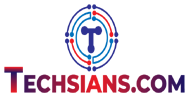Building and pest inspections are more than just a visual examination. In their work, a London pest control expert and professional building inspector will constantly employ advanced instruments and equipment—these aid specialists in detecting different faults and issues that may not be visible to the human eye.
This equipment is most of the time utilized to improve the inspection’s efficiency, speed, and accuracy. Here’s a look at some of the equipment that building inspectors use on the Building and pest inspections.
Termite Detection Accurate Equipment
Termite inspectors employ a range of creative methods to eliminate the majority of guesswork, including:
- Radars or signals that emit calibrated signals to establish the presence of termites. Drywall, plywood, plasterboard, bricks, and other construction materials can all be used to identify termites.
- Without going into the structure, tools that can determine the difference between ants and termites.
- Advanced equipment is employed, and no actual wall penetration is required—this helps to pinpoint the exact location of the termite infestation and delivers precise readings. Because termite nests are not disturbed during the inspection, termite control options can be used while pests are present. This improves the treatment’s efficacy.
Moisture Detection Technology
Mold, algae, rot, and mildew grow in excess humidity in the interior areas of buildings. If left unchecked, these elements can cause substantial damage to features such as roofing, flooring, walls, and insulation. To avoid major problems, a thorough inspection of the entire Building must be carried out quickly and competently.
The level of moisture in the structure must be determined. Moisture can be easily detected in tiles or vinyl with a moisture meter. This device detects hidden leaks in bathrooms or shower floors and offers moisture readings throughout the structure.
This aids the inspector in tracing the leak back to its source and determining the point of entry. To conduct an efficient inspection, the building inspector must thoroughly understand various construction materials and components.
In addition, the professional must be well-versed in Australian Building Standards and reference manuals for water damage restoration. The inspector must also provide proposed solutions for the problem when delivering the client’s Building and pest inspections report.
Other Equipment and Tools
- Professional photographers also utilize powerful spotlights in dimly lit or gloomy situations where taking images might be challenging.
- Many building inspectors have backup batteries on hand in case of an emergency. It can be difficult for a professional to conduct further investigations once a power outage occurs without warning.
- A spirit level instrument can also check for leveling issues in installations like floors, windows, and walls.
- A termite donger may also be used by building and pest inspectors. A thin fiberglass rod with a plastic ball at the tip makes up this instrument. They use it to check for hollowness in walls, timber frames, and skirting boards, which could indicate the presence of a termite infestation.
Conclusion
New technology has emerged as a crucial aid in the ongoing battle against termites in recent years. It is identified by other names, the most common of which are “thermal imaging” and “infrared,” but all relate to the same type of instrument.
Read more about this website: myinterface.net
You should visit this site: webalives.com

